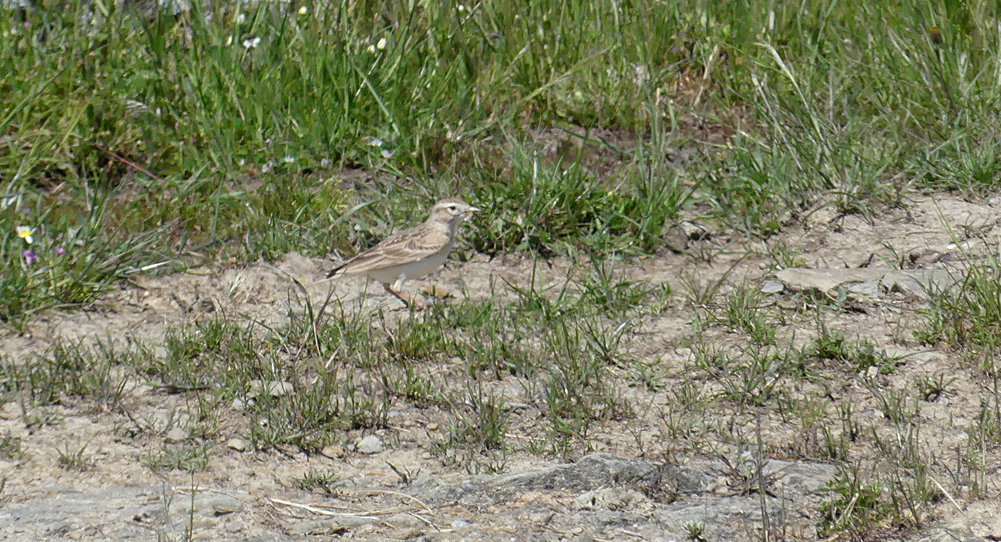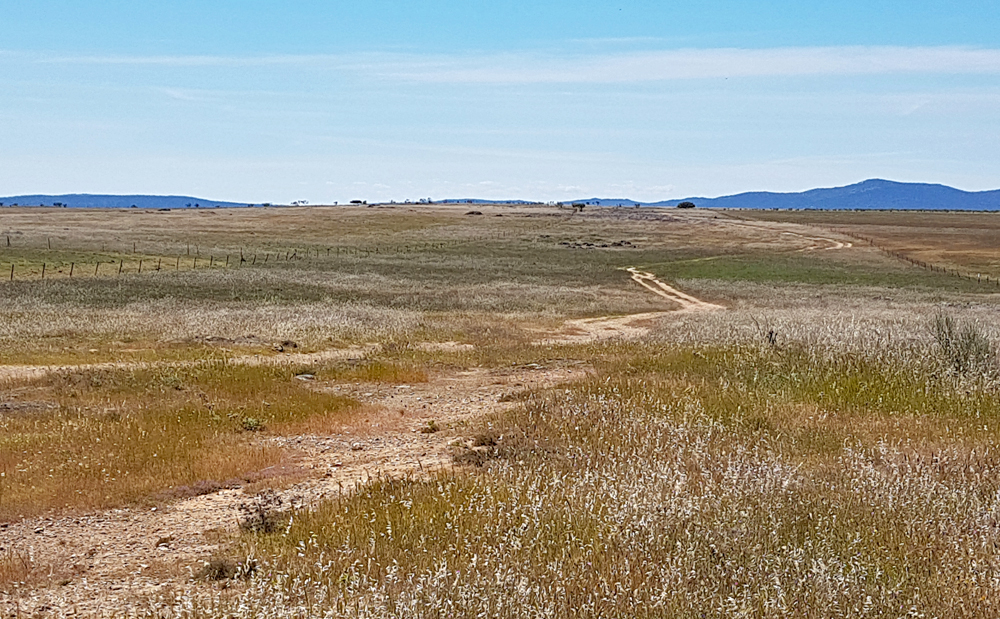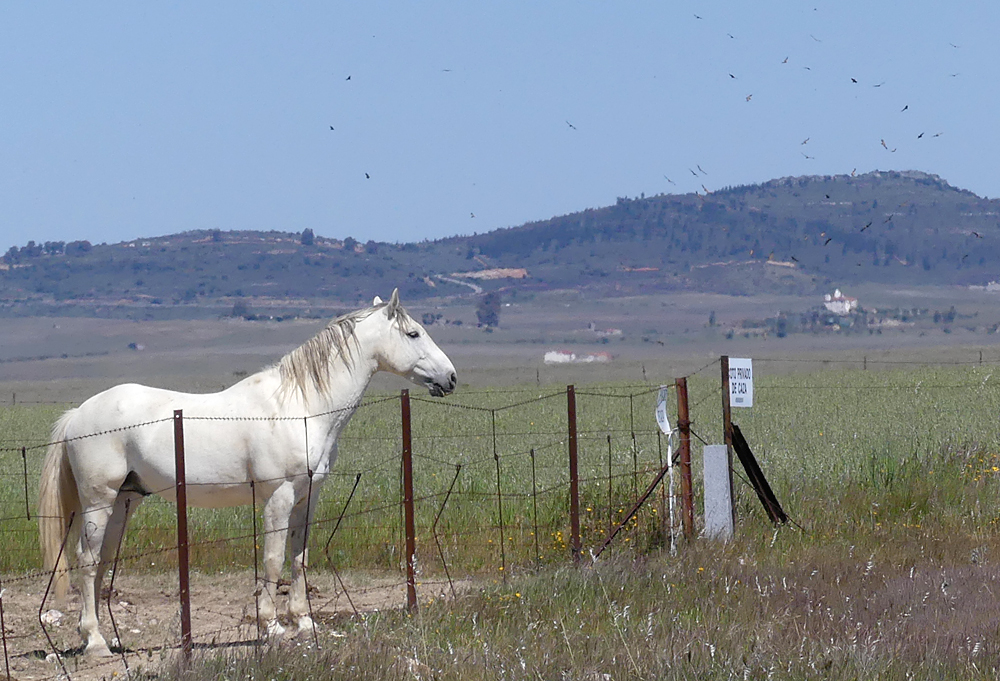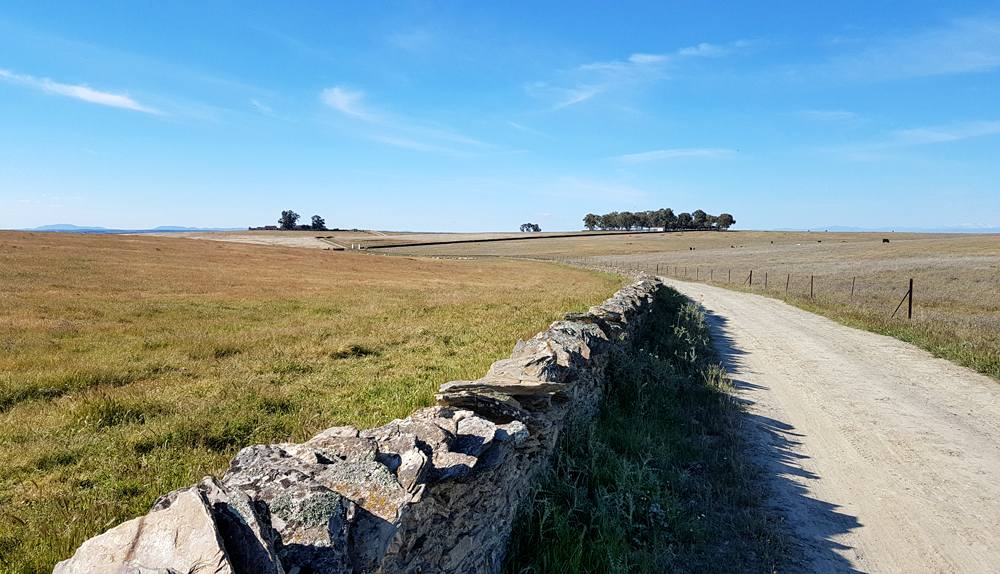Friday 12th April 2019 (b)
/BUBO in ESPAÑA - part 3
After a very successful morning driving the Santa Marta de Magasca loop and me ticking off no less than four new species, we thought it was a good opportunity to stop for a breather and some food. We took the main road towards Cacares before slipping off to get petrol. As we took the roundabout of the junction we noticed a superb Egyptian Vulture just sat in a field to the north of the road. We wanted to get a better look and ended up circling the roundabout four times before we found a break in the traffic to stop.
Egyptian Vulture - E of Cacares, 12 Apr 19
Next to the petrol station there was a café and we went in for some grub. As was to be a theme, the vegetarian options weren’t exactly wide ranging and I had a Spanish omelette. My diet for the week would more or less be just eggs, potato and bread. When birding in Europe you’ve always got to take into account that ordering and eating food takes quite a long time. Ideally you’d like to just grab a quick bite to eat and then be out in the field again as soon as possible. In Spain we found that even a quick stop for food was a drawn-out process if you had to place an order. After we’d finished we headed back to the car and noticed that there were quite a few moths sitting on the shady, white wall of the petrol station - obviously there was an overnight security light there. There were lots of the micro Ethmia bipunctella and a few other pyralids, a shark moth which looked like Chamomile Shark (but there are a few very similar species) and a white-coloured footman that we subsequently worked out must have been a plain form of Speckled Footman. Then Andy looked up and saw a huge monster of a moth, as big as your hand, on the overhang. This was a Great Peacock Moth, one of the biggest moths in Europe, a giant version of an Emperor Moth. It was a real beast.
Great Peacock Moth - E of Cacares, 12 Apr 19
Speckled Footman - E of Cacares, 12 Apr 19
Chamomile Shark (or similar species) - E of Cacares, 12 Apr 19
As we’d been very successful in the morning, we didn’t really have any more specific targets to look for in the plains, so we thought we’d try a different area. The guide book said that the plains south of Cacares were pretty good and so we headed down there. We got delayed in the traffic in Cacares town centre but it meant we were able to see some urban swifts above the streets which we guessed were probably Pallid Swifts. About 10 km south of Cacares is the village of Valdesalor and from there we turned west along a dirt track into the plains. At the start of the track, after we crossed a rickety bridge, there were a few ponds where we saw a couple of Little Grebes and a few Fan-tailed Warblers were zitting away. We carried on through the quite dusty and barren habitat but there didn’t seem a lot of birds in this area, although it was now the middle of the day and it was getting warm out. We stopped the car at the top of the first hill so we could scan the area. There wasn’t a great deal to see flying around apart from a few vultures and White Storks. In a large ploughed field there were quite a few Short-toed Larks singing and feeding. We had a few Meadow Pipits and a Wheatear but we pushed on to find a better area.
Valdesalor Plains, 12 Apr 19
Short-toed Lark - Valdesalor Plains, 12 Apr 19
White Stork - Valdesalor Plains, 12 Apr 19
The track wound its way up the next hill and it became a little bit rough with rocks sticking out from the ground. There was a strong chance of undercarriage problems but Ian skilfully avoided any damage - just. Ahead, we could see a large flock of Griffon Vultures circling, perhaps as many as 100 or so. We headed towards these and, over the next rise we got a bit closer. It was quite spectacular watching such a large flock of such a large species. We found at least one, probably two, Black Vultures in amongst these but the heat haze and the distance meant that the species was still avoiding the camera. We had more Short-toed Larks along the track, along with the odd Woodchat Shrike and Spanish Sparrow flock. Later on, as the track dropped back down towards the next main road we found a very distant Great Bustard in a field. Despite our best efforts, we didn’t find half as much in these plains as we had in the Santa Marta area, but it may have been linked with the time of day.
The track we followed crossing the Valdesalor Plains, 12 Apr 19
Griffon Vultures - Valdesalor Plains, 12 Apr 19
Barbary Nut Iris - Valdesalor Plains, 12 Apr 19
Small Heath - Valdesalor Plains, 12 Apr 19
Griffon Vultures and horse - Valdesalor Plains, 12 Apr 19
When we reached the next main road, we headed further SW until we reached the edge of the plains and the road rose towards a rocky escarpment which was apparently a traditional Eagle Owl site. We didn’t expect to see one of course in the daytime but we thought it was a decent place to have a bit of a stroll in a bit of a different habitat. This area was much more bushy dominated by Gum Cistus with its large white flowers. The best bird here was a Dartford Warbler which was elusive but eventually showed briefly. The warm weather had brought the lepidoptera out and we saw a few species of butterfly including a Green Hairstreak and a rather splendid geometer moth, Lythria sanguinaria, which had purple stripes and a bright orange hindwing.
Short-toed Eagle - SW of Valdesalor Plains, 12 Apr 19
Gum Cistus - SW of Valdesalor Plains, 12 Apr 19
Lythria sanguinaria - SW of Valdesalor Plains, 12 Apr 19
As it was now getting well into the afternoon, we thought it might be worth retracing our steps this morning and heading back to the Santa Marta de Magasca loop. We saw quite a few more Little Owls on the Roller nestboxes but didn’t really stop until we got to the same bridge west of the village that we visited earlier. We didn’t see any different birds here, although the Crag Martins were putting on quite a show, chasing each other around. The best thing here though was the snake that Daniel spotted swimming through the water. From the bridge I could see it really well as it swam underneath and out the other side. We identified it as a Viperine Snake from the zigzag pattern on top and the white spots down the side. This is in the same genus as Grass Snake and is similarly very aquatic, this one probably hunting frogs. Whilst watching this one we saw two smaller ones in the water. I was thrilled with this - I never get to see any snakes!
Viperine Snake - West of Santa Marta de Magasca, 12 Apr 19
Viperine Snake - West of Santa Marta de Magasca, 12 Apr 19
Viperine Snake - West of Santa Marta de Magasca, 12 Apr 19
Crag Martins - West of Santa Marta de Magasca, 12 Apr 19
We found the track that we had visited first thing this morning to see if the bustards were showing any closer. We did see a couple of the Great Bustards but they were again pretty far away on the crest of the hill. Most of the birds we saw were similar to this morning - we did have a calling Quail however. We thought it was worth stretching our legs for a walk up one of the tracks to see what we could see and maybe get closer to the bustard. We could not however and the main areas of interest were non-avian. A fritillary on the track revealed itself to be a Queen of Spain Fritillary with its white underwing spots and curved forewing. We photographed a yellow-coloured dragonfly which we eventually identified as a Western Clubtail. We couldn’t work it out at first especially as this species barely has a clubbed tail at all. Just as we returned to the car I saw a large lizard race across the track and hurl itself over a dry stone wall. I didn’t get a good look at it and it was impossible to refind, but from size alone it had to be an Ocellated Lizard.
SE of Santa Marta de Magasca, 12 Apr 19
Queen of Spain Fritillary - SE of Santa Marta de Magasca, 12 Apr 19
Western Clubtail - SE of Santa Marta de Magasca, 12 Apr 19
Red-striped Oil Beetle and a smorgasbord of lichens - SE of Santa Marta de Magasca, 12 Apr 19
Walking back down the track SE of Santa Marta de Magasca, 12 Apr 19
Driving out of the area, before we got to the main road, we saw a small flock of birds fly across the road in front of us. They gave the impression that they may have been sandgrouse and appeared to land in a field. So we pulled up and climbed the bank to look in the field but all we saw were sheep. However, just in the field next door we were surprised to see a super Great Bustard, much closer than any we had seen earlier. It seemed to suddenly appear from nowhere so may have been sat down in the long grass before spotting us. Really I should have got better photos before it wandered off over the rise.
Great Bustard - SE of Santa Marta de Magasca, 12 Apr 19
As with the previous day, I had now developed a stinker of a headache and the painkillers I had taken a short while before hadn’t helped at all. It’s more annoying than anything when you just want to enjoy your time away and your head is distracting you. We headed off for some food at a roadside eatery - well when I say food, I mean a strange “vegetable burger” of various salad things and eggs, with much ‘gunk’ upon it - not very pleasant. Outside we noticed that the juvenile Swallows here had already left the nest from the colony in the car park. Also in the car park we found a flattened Sardinian Warbler that had probably fallen off someone’s front grill, and also a dead Spanish Marbled White lying on the floor.
Spanish Marbled White (deceased) - near Trujillo, 12 Apr 19
We took the back roads back to Plasenzuela after we had eaten and finally came across an Azure-winged Magpie that stood still for a minute. The species is relatively common it seems but nearly always only seen in flight. This was the only opportunity I had all holiday to take a snap. But a cracking bird nonetheless. After doubling up on paracetamol and having a lie down in the room I suddenly felt a lot better and was finally able to enjoy a nice beer with the lads in the bar. Loooooooooog!!!
Azure-winged Magpie - nr Plasenzuela, 12 Apr 19
Our route for the day




























